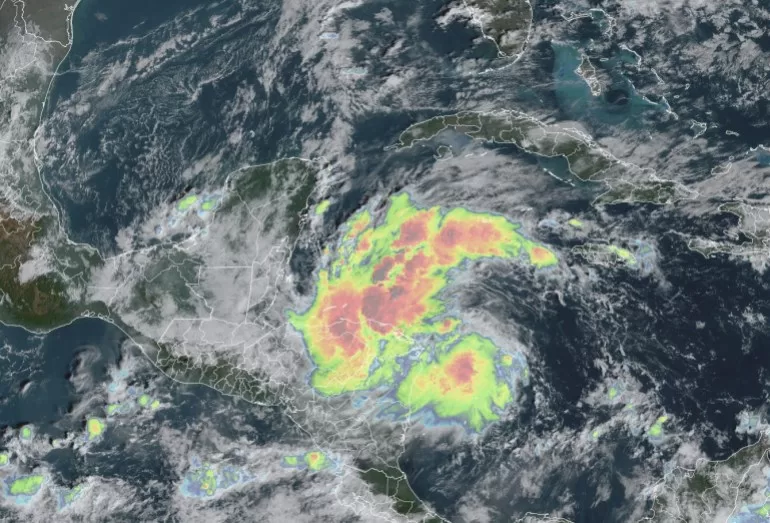The late season storm is forecast to bring heavy rains to flood-prone Central America before moving east towards the US.
A new tropical storm in the Caribbean is threatening to bring life-threatening rains to Central America before heading to Mexico and the United States as tropical storm warnings have been issued.
The US National Hurricane Center (NHC) on Thursday forecast “potentially catastrophic flash flooding and mudslides” in Honduras over the next few days.
Tropical Storm Sara was about 85km (50 miles) from the east coast of Nicaragua and Honduras on Thursday with maximum sustained winds of 65km/h (40mph), just below tropical storm strength.
Sara is moving westwards towards Honduras and is the 19th named storm of the season.
The centre of the storm is expected to cross Mexico’s Yucatan Peninsula over the weekend as it turns sharply to the east, slowing over land and dumping heavy rains on flood-prone mountains and valleys in northern Honduras as well as generating a storm surge over the low-lying Atlantic coast of Central America, known as the Mosquitia.
After that, weather experts said, there is still uncertainty about Sara’s path, including a possible hurricane threat to Florida next week. Florida is still recovering from two major hurricanes that struck its west coast this year, Helene in September and Milton in October.
“While an eventual Florida impact is a possible scenario, any potential landfall remains around 7 days out, and there is still much uncertainty as to what actually moves into the Gulf [of Mexico] next week,” wrote Ryan Truchelut, a hurricane expert in Tallahassee, Florida.
The latest weather models show Sara spending more time over Central America, likely weakening the storm and reducing the hurricane threat to the United States.

A major storm this late in the hurricane season, which ends on November 30, would be highly unusual. “Of the 642 tropical storm or hurricane landfalls on record in the continental US since the 1850s, only 4 occurred after November 15, and just one, 1985’s Kate, was a hurricane,” Truchelut wrote on his WeatherTiger blog.
Truchelut, and other forecasters have put the rare conditions down to warmer seas and higher weather temperatures for this time of year. The seas in the Gulf of Mexico and the Caribbean are not cooling off as they normally do at this time of year.
“There’s plenty of fuel available to sustain a hurricane, if atmospheric conditions allow,” Truchelut added.
Earth saw another unusually warm month with October ranking as the second warmest October on record, according to the US National Oceanic and Atmospheric Administration (NOAA).
In May, NOAA predicted the 2024 Atlantic hurricane season was likely to be well above average with 17 to 25 named storms. The forecast called for as many as 13 hurricanes and four major hurricanes.
An average hurricane season produces 14 named storms, seven of them hurricanes and three major hurricanes.
Last month, Rafael was the 11th hurricane to form this year, hitting western Cuba, with five becoming major Category 3 storms with maximum sustained winds of 178km/h (111mph) or more.
